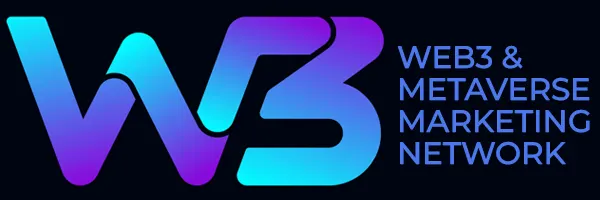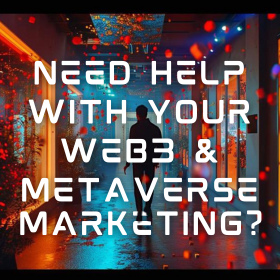Web3 Advertising Trends For 2025
The Web3 marketing market industry is developing at an enormous pace. According to Market Research Future, it is projected to grow sixfold, from $1.9 billion in 2024 to $12.8 billion by 2032.
Web3 advertising is powered by innovative tech like blockchain, smart contracts and tokenization; this naturally brings fresh trends to the scene. In this article, we’ll explore what’s influencing the advertising market today, from advancing ad formats to smarter user analytics and placement strategies.
Onchain Ads
Ads that live fully on the blockchain are only visible through Web3 browsers. These on-chain ads can offer more transparency, control and interactivity than traditional Web2 ads.
Key formats include:
• NFTs As Ads: These are unique, verifiable promo assets users can view or even own. For example, Nike created CryptoKicks, an NFT-based game where users collected and traded digital sneakers as part of the brand experience.
• Smart Contracts For Ads: These trigger ads are based on specific blockchain actions, like wallet activity or token transfers. They can also automate rewards for user engagement.
• Decentralized Ad Spaces: Think ad billboards in the metaverse, bought and sold as tokens or NFTs. These digital spaces live in decentralized apps or virtual worlds and offer advertisers new, tradeable real estate.
Token-Based Incentives For Users
Get money for watching ads? Many companies now offer users perks—such as tokens, points or NFTs—in exchange for engaging with or learning about their brand.
For example, Brave, a Chrome-based Web3 browser, blocks traditional ads while rewarding users with Basic Attention Tokens (BAT) for viewing Web3 ads. Similarly, Permission.io lets users earn ASK tokens for watching ads or sharing data with trusted brands.
Token-Curated Ads
You might be surprised by another token trend; this one’s about how ads are selected and shown.
Token-curated ads let users decide which ads appear through token-weighted voting, using token-curated registries (TCRs). This empowers the community to filter out spam and promote relevant content, turning users into active moderators.
Yes, rewarding users with tokens costs companies, but the trade-off is a loyal, engaged audience. As a real-world example, SuperRare launched the $RARE token, letting its community vote on which artists and artworks get featured.
Gamified Ads
Everything old is new again; remember those 2010 mini-games promoting full-version titles? Now, gamified ads are doing something similar for Web3 projects.
Platforms like Galxe, Layer3 and Zealy create interactive quests, known conveniently as quest platforms, that teach users about a project’s features while rewarding them with tokens.
I think the Arbitrum Odyssey by Galxe is a great example. Over two months, users explored the Arbitrum ecosystem by completing tasks involving platforms like Yield Protocol, GMX and Uniswap. They earned NFTs for participation, drawing in 1.67 million participants, over 623,000 unique users and minting 1.67 million NFTs.
Projects without native tokens can offer point systems, like Rainbow Wallet, where points may lead to airdrops or future rewards. Layer3 also allows users to casually explore Web3 services by completing quests, making discovery both fun and rewarding.
Automated Ad Buying
If your company hasn’t explored automated ad buying yet, it might be time to take a closer look. These systems run on smart contracts—self-executing code that handles bidding, verification and payments automatically. Ads are only triggered when preset conditions are met, cutting out middlemen and helping to reduce errors.
A more specific type is programmatic advertising, which automates real-time buying and selling of ad space. Back in 2019, IBM was already launching a decentralized platform for programmatic media buying. The result? Less ad fraud, better ROI and a major step toward ad transparency.
On-Chain Attribution
On-chain attribution is a new and fundamentally different way of analyzing information. It tracks every user step throughout their journey, even across multiple platforms. It can be transactions or smart contract interactions recorded on the blockchain. Among the companies offering on-chain attribution include ones like Spindl, Addressable and MetaCRM.
Hybrid Generalized Ad Protocols
The real magic happens when on-chain and off-chain worlds meet. By linking a user’s traditional web activity with their blockchain identity, hybrid ad protocols can track behavior across multiple channels. This gives marketers a full view of user interactions, both on and off the chain.
Some examples of Web3 analytics and marketing platforms include Cookie3, Safary and Oxarc. These can help track everything from wallet activity and NFT usage to website visits and social engagement. I have found these to be significant tools in helping to better understand and target your audience.
AI In Web3 Advertising
Where would we be without AI today? Web3 companies are embracing it too, using AI to speed up processes, personalize ads and analyze user behavior more effectively.
One example is EarnOS, a Web3 ad and payments platform built on the XION blockchain. It uses AI-driven semantic analysis to understand users’ digital footprints and deliver ads that match their interests. On top of that, it leverages decentralized knowledge graphs and enables instant global stablecoin payouts.
What To Keep In Mind When Advertising Web3 Projects
Web advertising is truly challenging. The task of an advertiser is not only to compete with others but also to earn users’ trust; you have to prove your security to them.
I think the main feature of Web3 advertising is user-centricity. It emphasizes privacy, gives individuals more say over the content they see and prioritizes building trust before making offers. At the same time, effective advertising still depends on accurate user data; without it, campaigns risk falling short.
Forbes







